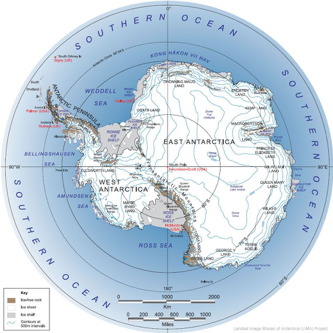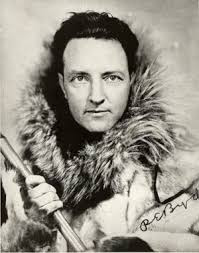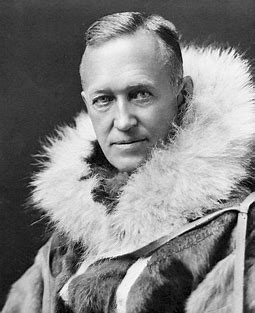
Antarctica Exploration Timeline

1768 – 75
Captain James Cook circumnavigated Antarctica twice but pack ice prevented him from seeing the continent. Cook crossed the Antarctic Circle and took possession of South Georgia Island for King George III of England.
1819 – 21
Captain Thaddeus Bellinghausen, sent by Czar Alexander I of Russia, circumnavigated Antarctica and was likely the first person to see the continent.
1820
An American sealer, Nathanial Palmer, discovered mountain peaks in Graham Land on the Antarctic Peninsula.
1837 – 1840
Dumont d’Urville discovered Adelie Land south of Australia and claimed it for France.
1839 – 1843
The British naval officer James Clark Ross circumnavigated Antarctica and entered the Ross Sea where he discovered Ross Island. He named two mountains on the island after his ships the H.M.S. Erebus and H.M.S. Terror.
1898 – 1900
The Norwegian Carsten Borchgrevink lead an expedition from Britain which explored the coast of Victoria Land south of New Zealand. Borchgrevink and 10 men wintered over at Cape Adare. These were the first men to intentionally spend the winter in Antarctica.
1901 – 04
Commander Robert Falcon Scott commanded the British National Antarctic Expedition. Discovery Hut was built on Ross Island in McMurdo Sound as winter over-lodging. Scott, Edward Wilson, and Ernest Shackleton attempted to reach the South Pole in late 1902 but were forced to turn back 530 miles short of their goal due to a shortage of supplies.1901-1904
1907 – 09
Ernest Shackleton led the British Antarctic Expedition to Antarctica and established a winter-over hut at Cape Royds on Ross Island. Shackleton and three companions attempted to reach the South Pole but were forced to turn back 97 miles short of their goal due to a shortage of food and low temperatures.
1910 -12
The Norwegian Roald Amundsen established his Framheim base camp on the Ross Ice Shelf at the Bay of Whales. Amundsen and four companions used skis and sled dogs to be the first to reach the geographic South Pole on December 14, 1911. The 1,600 mile round trip to the South Pole and back took 99 days.
1910 – 1912
Captain Scott returned to Ross Island on his ship the Terra Nova with the stated objective of being first to reach the South Pole. Scott and four companions reached 90 degrees South on January 17, 1912, over a month after Amundsen. Bitterly disappointed, the party turned back towards Ross Island only to perish during the journey weakened by starvation, scurvy, and deteriorating weather conditions.
1911 – 1914
Douglas Mawson landed at Cape Denison on Commonwealth Bay and established a base camp. Mawson and two companions used sled dogs to explore the icecap in the vicinity of the South Magnetic Pole. One man fell in a crevasse, another died of starvation, and Mawson was forced to return to Cape Denison alone only to find his ship the Aurora had left without him. He was forced to spend a second winter over with six companions.
1914 – 16
With the prize of the South Pole claimed by Amundsen, Shackleton returned to Antarctica to attempt the first ever crossing of the continent. His ship the Endurance was crushed by sea ice in the Weddell Sea so Shackleton and his crew were forced to sail to Elephant Island in three small open boats. Incredibly Shackleton and five companions then sailed over 700 miles in 15 days in a small boat to South Georgia Island where, after crossing glacier clad mountains, they reached a whaling station. From there a rescue boat finally reached Elephant Island on the fourth attempt and rescued all hand safely.
1928 – 29
Sir Hubert Wilkins took two Lockheed Vega airplanes to Deception Island off the Antarctic Peninsula. From Deception Wilkins flew the first ever airplane flights over Antarctica.
1928 – 30
 Commander Richard E. Byrd established his Little America base camp on the Ross Ice Shelf at the Bay of Whales. He brought three airplanes and he flew one of them, a Ford tri-motor, on the first airplane flight to the South Pole and back on November 29, 1929. It took Byrd 18 hours to fly the same 1,600 miles that had taken Amundsen 99 days by dog sled in 1911. Congress promoted Byrd to Rear Admiral.
Commander Richard E. Byrd established his Little America base camp on the Ross Ice Shelf at the Bay of Whales. He brought three airplanes and he flew one of them, a Ford tri-motor, on the first airplane flight to the South Pole and back on November 29, 1929. It took Byrd 18 hours to fly the same 1,600 miles that had taken Amundsen 99 days by dog sled in 1911. Congress promoted Byrd to Rear Admiral.
1933 – 35
Admiral Byrd returned to Antarctica and spent the first ever winter over in the interior of Antarctica, alone, at Advance Base 120 miles south of Little America. Byrd made daily weather observations but became very ill when carbon monoxide leaked from a faulty stove. Three men: Tom Poulter, Amory Waite, and Pete Demas traversed 120 miles to Advance Base in the dark of winter and in temperatures as low as -70 to nurse Byrd back to health and fly him back to Little America
1935
Lincoln Ellsworth flew his Lockheed Gamma monoplane the Polar Star from Dundee Island at the tip of the Palmer Peninsula across the Antarctic continent to the Ross Ice Shelf. The plane ran out of fuel and landed near Byrd’s Little America camp. Due to a faulty radio Ellsworth and his pilot could not communicate their predicament to the outside world so they were declared missing. They were stranded at Little America for two months before being discovered and rescued.
1939 – 41
In 1939 Hitler sent the Third German Antarctic Expedition to chart the coast of Queen Maude Land. Nazi flags and symbols were distributed along the coast. In response President Roosevelt directed Admiral Byrd to lead the U.S. Antarctic Service, the first of Byrd’s expeditions to receive federal funding. Bases were established on the Palmer Peninsula and Ross Ice Shelf and extensive mapping and scientific research were carried out. American flags and benchmarks were left throughout the territory.
1946 – 47
After WWII Admiral Byrd led Operation Highjump to Antarctica. This was a huge expedition of 4,700 men, 13 ships (including an aircraft carrier), 19 airplanes, and a large contingent of scientists. Vast stretches of unexplored land from the Antarctic Peninsula to the Ross Ice Shelf to Wilkes Land south of Australia were mapped and the expedition returned with a large quantity of meteorological and scientific data.
1956 – 57
The United States launched Operation Deep Freeze I to Antarctica in preparation for the upcoming International Geophysical Year. Under the overall command of Admiral Byrd scientific bases were established at McMurdo Sound on Ross Island, the geographic South Pole, and Byrd Station in western Antarctica.
1957 – 58
12 nations cooperated in the International Geophysical Year (IGY) to establish 55 scientific stations in Antarctica. Extensive scientific research was carried out and this proved to be the genesis for the upcoming Antarctic Treaty ratified in 1961.
1957 – 58
Under the leadership of Dr. Vivian Fuchs the British Commonwealth Trans-Antarctic Expedition completed the first overland traverse of Antarctica. The expedition departed from the Ronne Ice Shelf in West Antarctica, reached the South Pole, and continued on to Scott base in McMurdo Sound. Sir Edmond Hillary scouted a route from Scott Base to the South Pole and laid supply depots so the Fuchs contingent could continue on from the Pole back to Scott Base.
1961
The Antarctic Treaty, signed by the 12 nations participating in the IGY, went into force in 1961. The Treaty preserves Antarctica for peaceful scientific study, sets aside all territorial claims, bars nuclear materials (weapons, power stations etc.), and prohibits military activity except in the support of science (ships, planes etc.). Since its inception a total of 53 nations have signed the treaty.
1980
Sir Ranulpf Fiennes and his Trans Global Expedition team reached the South Pole on December 15, 1980. His expedition was the first to accomplish a circumnavigation of Earth from Pole to Pole.
1989 – 90
Will Steger led the first non-mechanized crossing of Antarctica using sled dogs. The 220 day journey covered 3,741 miles from the Antarctic Peninsula to the South Pole to the Russian Mirnyy station.



